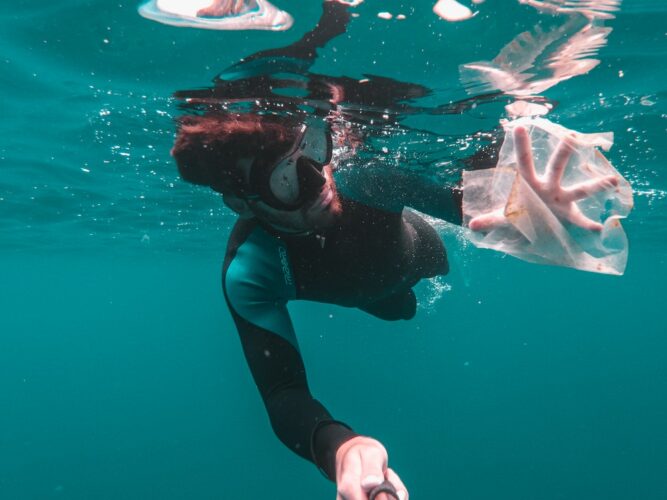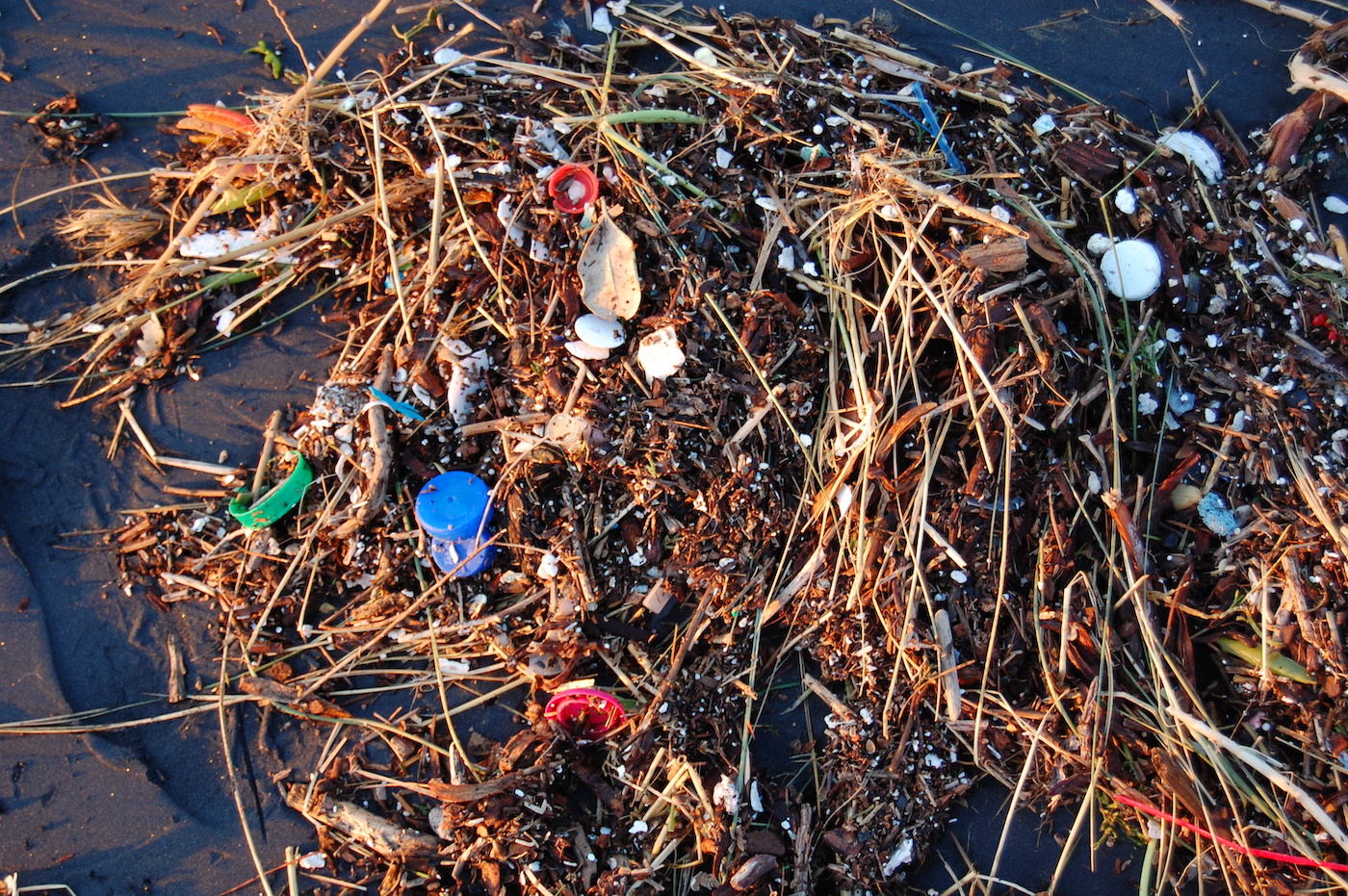Toronto – Canada can reduce its single-use plastic each year by one-third, or 720,000 tonnes – equivalent to the size of 6000 blue whales– according to Breaking the Plastic Cycle, a new, first-of-its-kind federal policy roadmap from Oceana Canada. The report focuses on single-use plastic packaging, which accounts for about half of Canada’s plastic waste, finding that despite population growth and associated demand, a significant reduction is possible using existing federal policy tools. By implementing Oceana Canada’s recommendations, Canada can cap single-use plastic waste by 2026 followed by a downward trajectory for our country’s plastic pollution problem.
Plastic pollution is the second biggest threat to the planet after climate change, according to the United Nations, and the two are inherently linked. To meaningfully tackle this crisis and to support the government’s zero-plastic waste vision, Oceana Canada’s roadmap outlines the bold action needed. It was also developed in response to the 90 per cent of Canadians surveyed by Oceana Canada who support the single-use plastic ban.
“Environment and Climate Change Canada took the first step in banning six categories of unnecessary single-use plastics last year and committing to recycled content requirements, improving plastics labelling and reining in plastic at major grocers across Canada,” said Anthony Merante, Oceana Canada’s Plastics Campaigner. “Plastic pollution is massive and needs to be taken seriously. If the government follows our recommendations, by 2040 Canada will prevent the generation of nine million tonnes of plastic waste. Our data shows that population growth will outweigh the impact of low-ambition policies that are slow walked. Only through ambitious, sector-wide action can Canada reduce plastic waste and become a global leader on the path to a plastic-free future.”
Oceana Canada’s recommendations include implementing bans on unnecessary and hard-to recycle items and pollution prevention (P2) plans for key sectors to establish plastic reduction requirements, refill and reuse provisions, and proven recycling targets. The roadmap identifies the seven sectors that are the greatest sources of single-use plastic collectively generating 41 per cent of plastic packaging waste in Canada. The following actions are recommended for these sectors:

- Grocery stores generate more than 382,430 tonnes of single-use plastic each year, excluding beverage bottles sold in-store. Packaging on produce, pouches replacing traditional metal and glass containers on products like baby food and overwrapping binding multiple products account for this source of single-use plastic. A P2 plan, calling for reduction in single-use plastic SUP generation by way of unwrapping products,
bringing back refill systems and removing all non-recyclable packaging from store is required. This sector can reduce plastic packaging waste by 45 per cent by 2040. 2. Beverage bottles represent more than 178,000 tonnes of single-use plastic each year. Pop and water are the leading products that contribute to this waste. This sector can be modernized by phasing in reuse requirements and building on well-established deposit return systems that already exist for alcoholic beverages across the country, resulting in 70 per cent of bottles being refillable and reusable by 2040.
- Polyvinyl chloride (PVC) or polystyrene (PS): Each year, Canada produces nearly 135,000 tonnes of single-use plastic that cannot be recycled or reused made from these materials. This sector can reduce plastic waste by 100 per cent with distribution ban and moving to more recyclable materials.
- Dine-out food service creates 125,000 tonnes of plastic packaging waste each year. This sector can reduce plastic waste by 100 per cent with full implementation of a P2 plan that brings major restaurants and food couriers together nationally to phase out non recyclable takeout containers and introduce reusable containers already in place in cities like Toronto and Vancouver.
- Pallet wrap is used by most Canadian businesses to bind goods on pallets during storage and transportation, and more than 111,000 tonnes of it is thrown away each year. This can be reduced by 90 per cent by 2040 spurring innovation in the sector, including reusable binding techniques such as nets instead of single-use films.
- Dine-in food service generates more than 70,000 tonnes of single-use plastic each year, including drinks and meals ordered “for here,” but served using single-use plastic cups and plates. This sector can reduce plastic waste by 100 per cent with a distribution ban.
- E-commerce: This sector generates more than 60,000 tonnes of single-use plastic each year and is led by a few industry giants. E-commerce can be zero plastic waste using a combination of bans and strong P2 plans calling for the removal of single-use plastic.
“Urgent government action is needed. We can hit peak plastic as soon as 2026 and reduce production and consumption of single-use plastic in every year that follows,” says Kim Elmslie, Oceana Canada’s Campaign Director. “It’s time for leaders in the sectors to step up and address the challenges by putting in measures to end plastic waste. Working collaboratively, we can make a positive impact on the environment, oceans and marine life.”
Major national grocery retailers offer the first opportunity to reduce plastic waste in Canada. In the summer of 2023, the government notified major grocers of a P2 plan to reduce unnecessary plastics throughout their operations. If designed and implemented efficiently, these plans could achieve several of the recommendations laid out in the report and greatly reduce plastic packaging waste in Canada.










Thank you, Oceana Canada, for taking a proactive stance against single-use plastic pollution! This roadmap is a significant step toward a cleaner and healthier environment. I’m excited to see initiatives that aim to cut one-third of Canada’s plastic pollution. Let’s all work together to make this roadmap a reality and create a sustainable future for our country.
https://nearestlandfillca.com/org/garbage-recycling-in-high-river/